Taking Cuttings From A Bleeding Heart – How To Root A Bleeding Heart Cutting
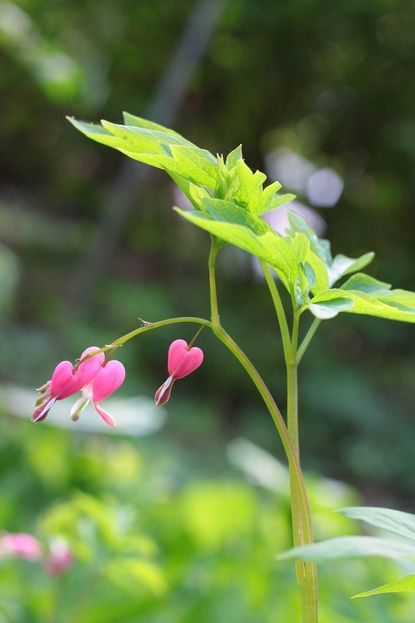

Bleeding heart (Dicentra spectabilis) is a spring-blooming perennial with lacy foliage and heart-shaped blooms on graceful, drooping stems. A tough plant that grows in USDA plant hardiness zones 3 through 9, bleeding heart thrives in semi-shady spots in your garden. Growing bleeding heart from cuttings is a surprisingly easy and effective method of propagating new bleeding heart plants for your own garden, or for sharing with friends. If you would enjoy having more of this gorgeous plant, read on to learn about bleeding heart cutting propagation.
How to Grow Bleeding Heart from Cuttings
The most effective way to root a bleeding heart cutting is to take softwood cuttings – new growth that is still somewhat pliable and doesn’t snap when you bend the stems. Immediately after blooming is a perfect opportunity for taking cuttings from a bleeding heart. The best time for taking cuttings from a bleeding heart is early morning, when the plant is well-hydrated. Here are simple steps on growing bleeding heart from cuttings:
- Select a small, sterile pot with a drainage hole in the bottom. Fill the container with a well-drained potting mixture such as peat-based potting mix and sand or perlite. Water the mixture well, then allow it to drain until it’s moist but not soggy.
- Take 3 to 5 inch cuttings (8-13 cm.) from a healthy bleeding heart plant. Strip the leaves from the bottom half of the stem.
- Use a pencil or similar tool to poke a planting hole in the moist potting mix. Dip the bottom of the stem in powdered rooting hormone (This step is optional but may speed rooting) and insert the stem into the hole, then firm the potting mix gently around the stem to remove any air pockets. Note: It’s fine to plant more than one stem in a pot but be sure the leaves don’t touch.
- Cover the pot with a clear plastic bag to create a warm, humid, greenhouse-like environment. You may need to use plastic straws or bent wire hangers to prevent the plastic from touching the cuttings.
- Place the pot in indirect sunlight. Avoid windowsills, as cuttings are likely to scorch in direct sunlight. Optimum temperatures for successful bleeding heart propagation is 65 to 75 degrees F. (18-24 C.). Be sure the temperature doesn’t drop below 55 or 60 degrees F. (13-16 C.) at night.
- Check the cuttings daily and water gently if the potting mix is dry. (This probably won’t happen for at least a couple of weeks if the pot is in plastic.) Poke a few small ventilation holes in the plastic. Open the top of the bag slightly if moisture drips down the inside of the bag, as the cuttings may rot if conditions are too moist.
- Remove the plastic when you notice new growth, which indicates the cutting has rooted. Rooting generally takes about 10 to 21 days or more, depending on temperature. Transplant the newly rooted bleeding heart plants into individual containers. Keep the mixture slightly moist.
- Move the bleeding heart plants outdoors once they’re rooted well and new growth is noticeable. Be sure to harden the plants in a protected spot for a few days before moving it to their permanent homes in the garden.
Gardening tips, videos, info and more delivered right to your inbox!
Sign up for the Gardening Know How newsletter today and receive a free download of our most popular eBook "How to Grow Delicious Tomatoes."

A Credentialed Garden Writer, Mary H. Dyer was with Gardening Know How in the very beginning, publishing articles as early as 2007.
-
 Shrub Diseases And Pests To Watch Out For
Shrub Diseases And Pests To Watch Out ForShrub diseases and pests can be challenging. Learn how to recognize and eradicate them before they can present a danger to your plants.
By Susan Albert
-
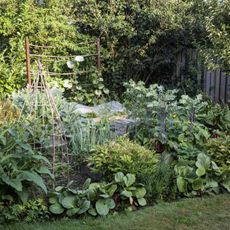 Foodscaping: The Most Beautiful Way To Grow Your Own Food
Foodscaping: The Most Beautiful Way To Grow Your Own FoodFoodscaping is a beautiful and profoundly practical way to mix beauty and function in your yard. Try food landscaping for a real sense of abundance.
By Bonnie L. Grant
-
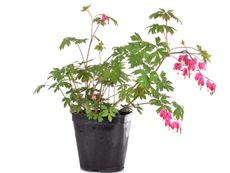 Houseplant Bleeding Heart Care – Growing A Bleeding Heart Plant Inside
Houseplant Bleeding Heart Care – Growing A Bleeding Heart Plant InsideIn order to be able to grow bleeding heart as a houseplant, it is important to know the conditions that this plant enjoys outdoors.
By Raffaele Di Lallo
-
 Bleeding Heart Color Change – Do Bleeding Heart Flowers Change Color
Bleeding Heart Color Change – Do Bleeding Heart Flowers Change ColorKnown for their lovely heart-shaped blooms, the most common color of which is pink, the gardener may find that a previously pink bleeding heart flower is changing color. Is that possible? Do bleeding heart flowers change color and, if so, why? Find out here.
By Amy Grant
-
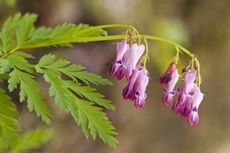 Caring For Bleeding Hearts: How To Grow A Fringed Bleeding Heart Plant
Caring For Bleeding Hearts: How To Grow A Fringed Bleeding Heart PlantWhile the old-fashioned Asian native bleeding heart (Dicentra spectabilis) is the most commonly used type in gardens, growing fringed bleeding heart varieties is gaining popularity. What is a fringed bleeding heart? Click here for more information.
By Darcy Larum
-
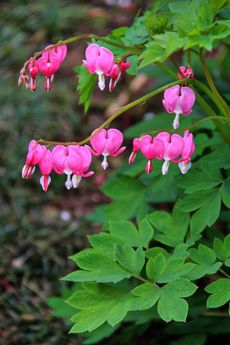 Bleeding Heart Pest Problems – Common Bugs That Eat Bleeding Heart Plants
Bleeding Heart Pest Problems – Common Bugs That Eat Bleeding Heart PlantsBleeding heart is an old-fashioned perennial that adds color and charm to shady spots in your garden. While the plant is surprisingly easy to grow, it can fall prey to a number of pesky insects. If you think something is bugging your plant, click here to learn more.
By Mary H. Dyer
-
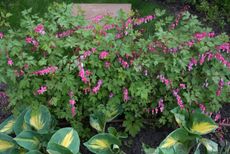 Bleeding Heart Diseases – Recognizing Diseased Bleeding Heart Symptoms
Bleeding Heart Diseases – Recognizing Diseased Bleeding Heart SymptomsBleeding heart (Dicentra spectablis) is a relatively hardy plant in spite of its lacy foliage and delicate, dangling blooms, but it can be plagued by a handful of diseases. Click on the following article to learn about common diseases of bleeding heart plants.
By Mary H. Dyer
-
 Caring For Bleeding Heart Transplants – How To Transplant A Bleeding Heart Plant
Caring For Bleeding Heart Transplants – How To Transplant A Bleeding Heart PlantGot a bleeding heart plant that always looks spindly, yellow and barely producing any flowers? If you find yourself in a circumstance like this and need to move a bleeding heart plant, then click on the article that follows for information on transplanting bleeding hearts.
By Darcy Larum
-
 Winterizing A Bleeding Heart Plant – How To Overwinter A Bleeding Heart
Winterizing A Bleeding Heart Plant – How To Overwinter A Bleeding HeartBleeding heart bushes bring a colorful and Old World charm to any garden. But what should you do when temperatures start to drop? Click here to learn more about bleeding heart winter care and how to protect a bleeding heart during winter.
By Liz Baessler
-
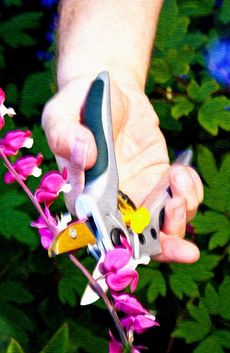 Tips For Bleeding Heart Pruning – How To Prune A Bleeding Heart Plant
Tips For Bleeding Heart Pruning – How To Prune A Bleeding Heart PlantBleeding heart plants are beautiful perennials that produce very distinctive heart-shaped flowers. But how do you keep one in check? Does it need regular pruning, or can it be allowed to grow on its own? Learn more about how and when to prune bleeding hearts here.
By Liz Baessler